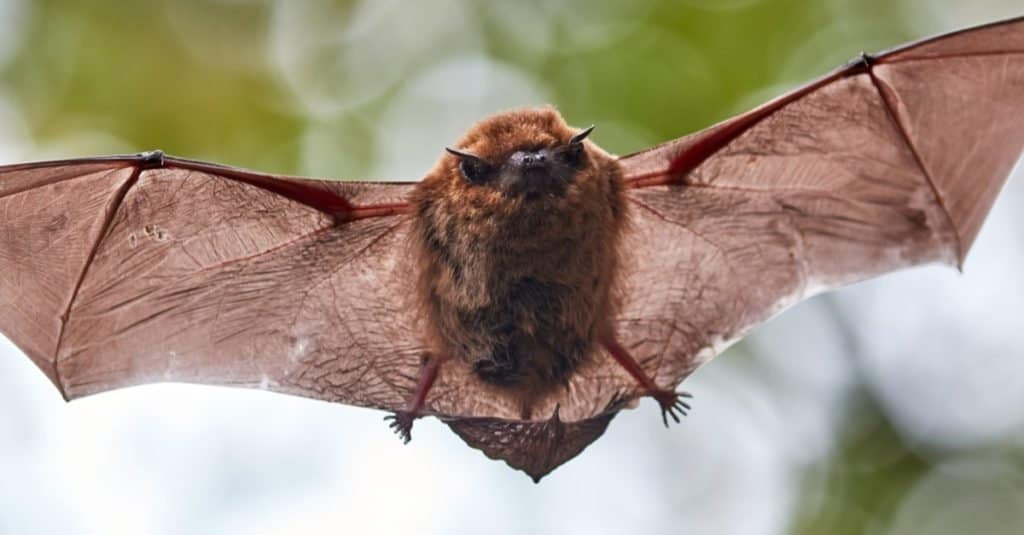
The post All the Animals You’ll Discover in Glacier National Park appeared first on A-Z Animals.
If you love the outdoors, then one of the best places to visit in Montana is Glacier National Park. It’s one of the most popular places in the state and welcomes approximately three million visitors every year. Spanning more than one million acres, the park includes mountains, glaciers, lakes, and forests, and is the perfect spot for activities such as fishing, hiking, and rock climbing. Of course, with such a diverse range of habitats, it’s unsurprising that the park is also home to a vast number of animals, including 276 different species of birds and 71 species of mammals. Let’s take a look at some of them now!
Bats

The little brown bat is just one of ten species of bats in the national park.
©Bernd Wolter/Shutterstock.com
There are ten species of bats living in Glacier National Park, including the little brown bat (Myotis lucifugus), big brown bat (Eptesicus fuscus), hoary bat (Lasiurus cinereus), and the silver-haired bat (Lasionycteris noctivagans). Bats can usually be spotted in the evening when they come out to forage, and Glacier holds an annual “Going Batty” event in the summer to help people spot them. Unfortunately, Glacier’s bats are under threat from a fungus called “white nose syndrome”, which attacks their bodies.
Bears
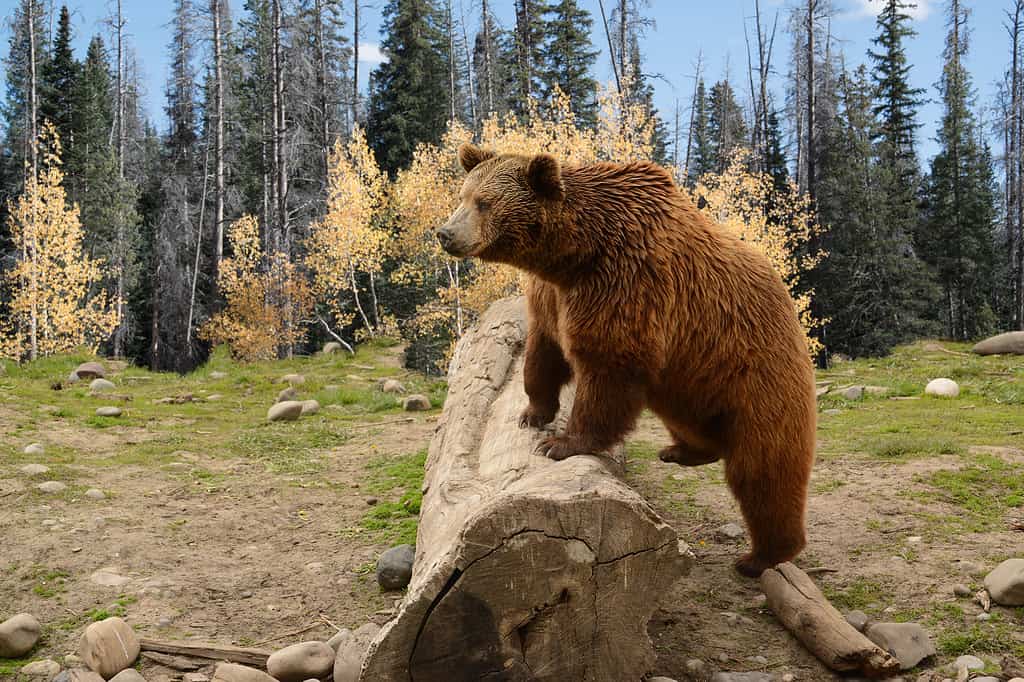
Both brown and black bears can be found in Glacier National Park.
©Georgia Evans/iStock / Getty Images Plus via Getty Images
There’s a healthy population of both brown bears (Ursus arctos) and black bears (Ursus americanus) in Glacier National Park. Brown bears are the larger of the two species and can weigh up to 1,300 pounds. Both species prefer forest habitats, including those on mountains. Although bears typically prefer to stay away from humans, it’s important to be vigilant and follow Glacier’s bear safety protocols if you do encounter one.
Beaver
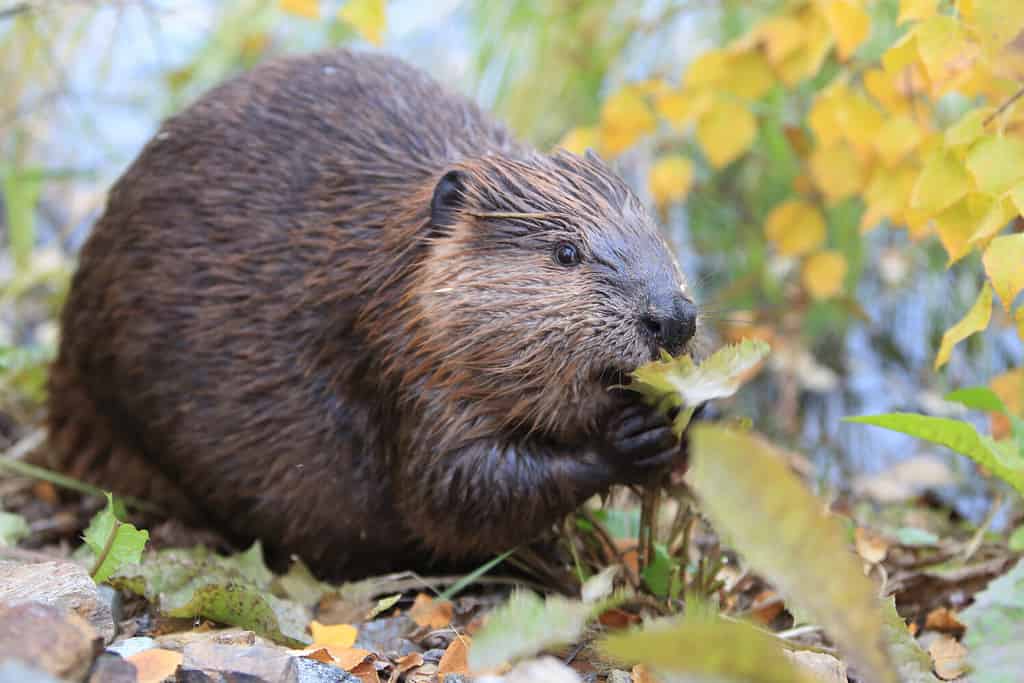
The beaver is considered a keystone species due to the way they can change water courses with their dam building.
©Frank Fichtmueller/Shutterstock.com
Beavers (Castor canadensis) are some of the most fascinating animals in the park. They are considered a keystone species due to their ability to transform habitats by building dams across rivers and streams. These dams are complex structures that form a safe haven for beavers where they can give birth and escape from predators. Beavers are often found in and around the Lower McDonald Creek.
Bighorn Sheep

Bighorn sheep are named for their impressive horns.
©Gerald Corsi/iStock via Getty Images
Glacier National Park is also home to bighorn sheep (Ovis canadensis), which are named for their horns. Both sexes have horns, although they are smaller and straighter on females compared to the large, curved horns of the males. They can reach 41 inches at the shoulder, and males usually weigh up to 300 pounds, although some individuals can exceed this. Bighorn sheep are sure-footed and hardy, allowing them to survive high up in the mountains.
Boreal Toad

Boreal toads can often be found around Lake McDonald in Glacier National Park.
©Saeedatun/Shutterstock.com
The only toad in the park is the boreal toad (Anaxyrus boreas boreas), which is a subspecies of the western toad. Boreal toads are 2.4 to four inches long and are brown or green with a white stripe down their back. They live in freshwater habitats at high altitudes — typically elevations of 8,000 to 12,000 feet — and in Glacier National Park, they are most often found around Lake McDonald and along the South Shore Trail. However, they are currently threatened by chytrid fungus, which affects their skin.
Canada Lynx
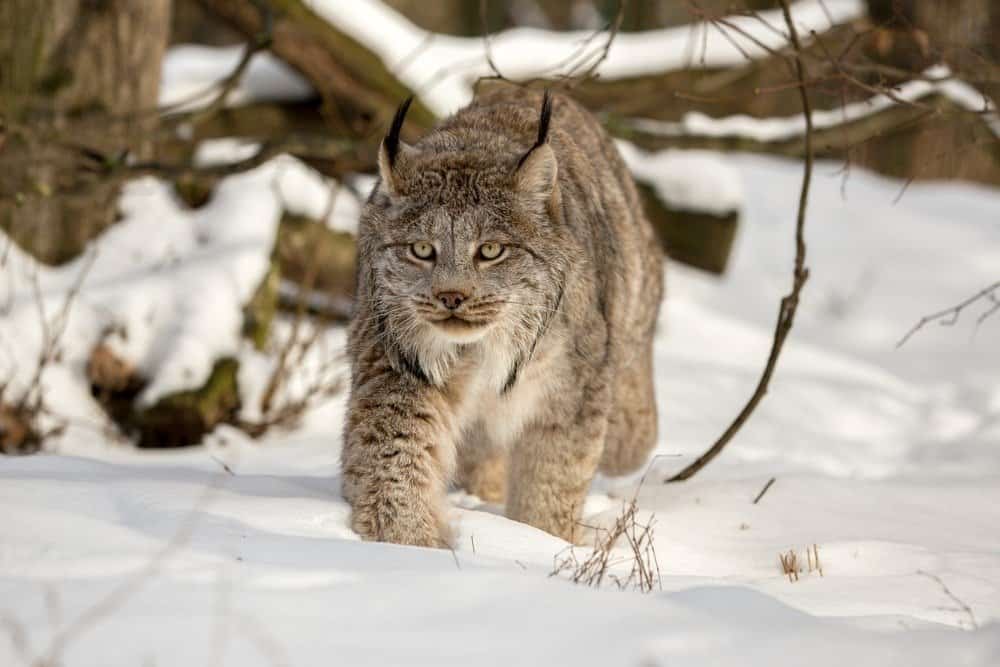
Although not often spotted, the Canada lynx is present in the park.
©Felineus/Shutterstock.com
The Canada lynx (Lynx canadensis) is one of the rarer animals in the national park. They predominantly inhabit Canada, but their range has extended into the United States. They can be found in forests in Glacier, but they are usually only active at night. Snowshoe hares make up the majority of their diet, but they will also eat birds and rodents.
Chickadees
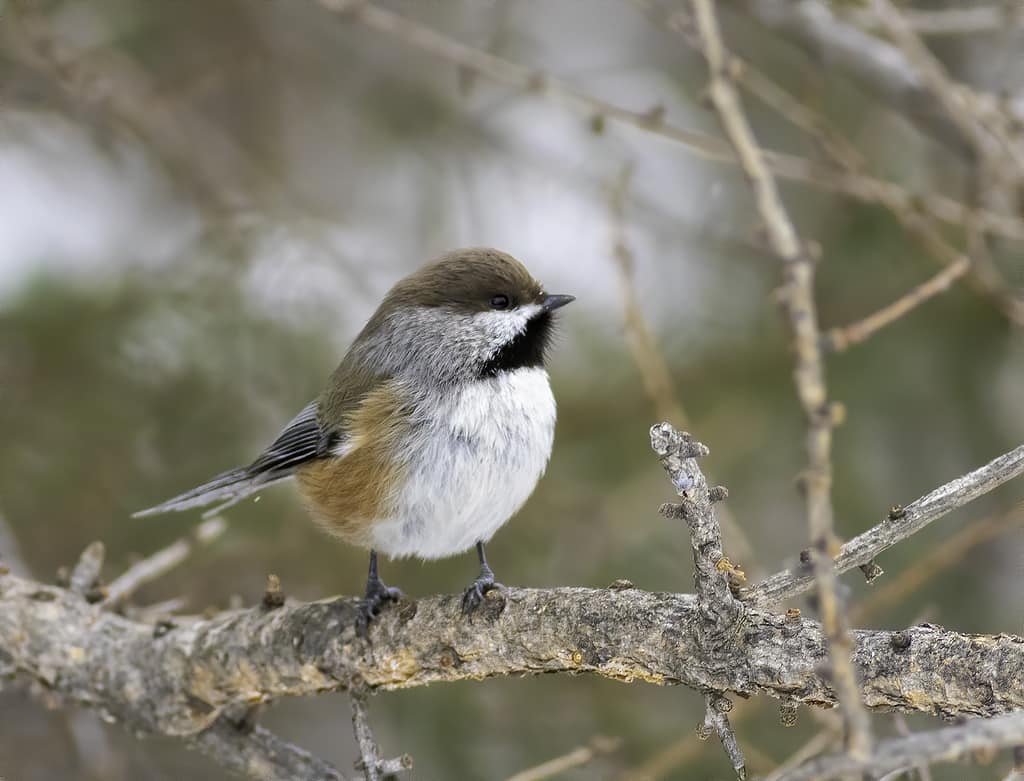
There are found species of chickadees in the region.
©Matthew Jolley/ via Getty Images
Chickadees are small birds that are known for their distinctive “chick-a-dee-dee-dee” call. There are four species living in Glacier National Park, with the black-capped chickadee and the mountain chickadee being the most common. The other two species are the boreal chickadee and the chestnut-backed chickadee. Chickadees live in a range of habitats, including forests, mountains, and grasslands.
Elk
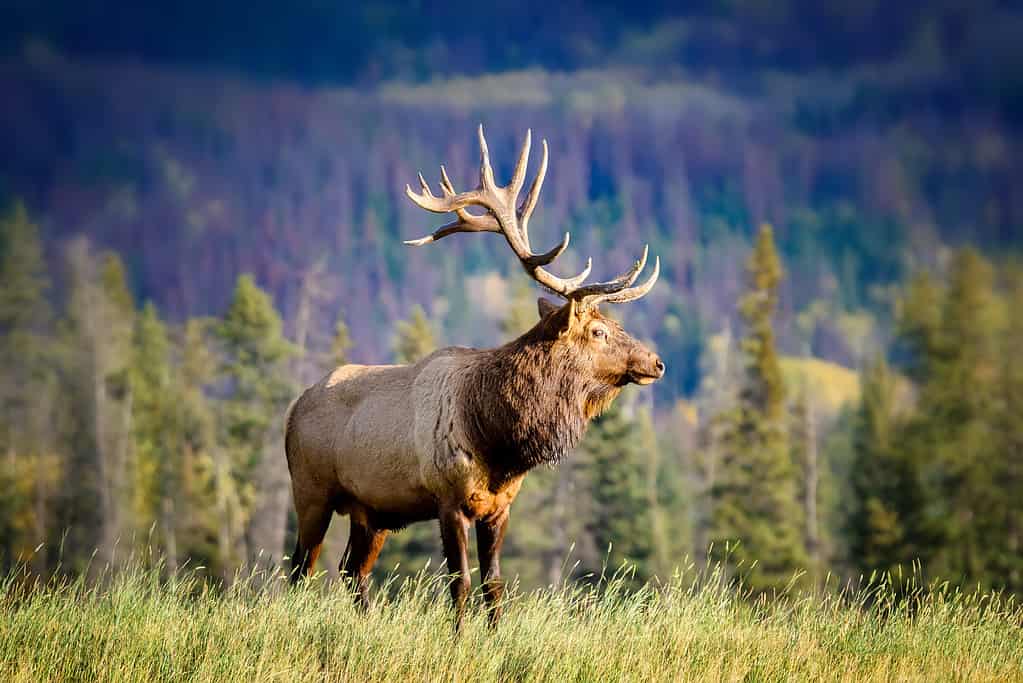
Elk can be found at high elevations during the summer months.
©Jaroslav Sugarek/iStock / Getty Images Plus via Getty Images
You might also spot some elk (Cervus canadensis) during your visit. Elk can reach heights of almost five feet at the shoulder, and the largest males can weigh over 1,000 pounds. They are usually found in forests and at forest edges and live at lower elevations in the park during the winter and higher ones during the summer months.
Frogs

The Columbia spotted frog is just one of several species of frogs that you might see.
©Kevin Wells Photography/Shutterstock.com
There are four species of frogs in Glacier National Park — the boreal chorus frog (Pseudacris maculata), Pacific tree frog (Pseudacris regilla), Rocky Mountain tailed frog (Ascaphus montanus), and the Columbia spotted frog (Rana luteiventris). Frogs can be found throughout the national park, although the Pacific tree frog is only found in areas west of the Continental Divide, and the boreal chorus frog is found to the east.
Hawks
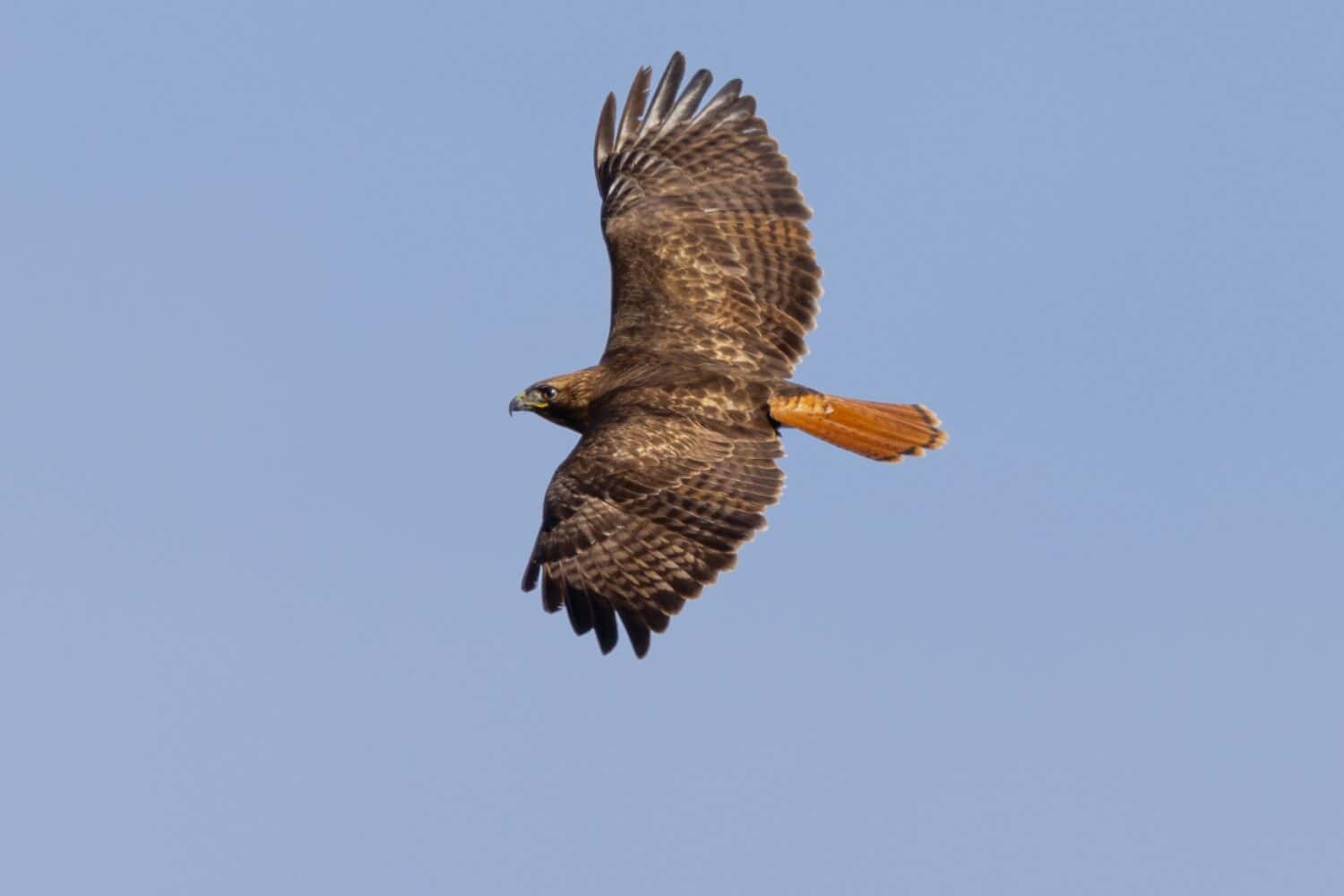
Red-tailed hawks are present all year round in Glacier.
©ranchorunner/Shutterstock.com
There are also several birds of prey in the national park, including approximately six species of hawks. The most common species is the red-tailed hawk (Buteo jamaicensis), which is present for most of the year. Although less common, other species that you might spot include Swainson’s hawk, Cooper’s hawk, and the rough-legged hawk.
Hummingbirds
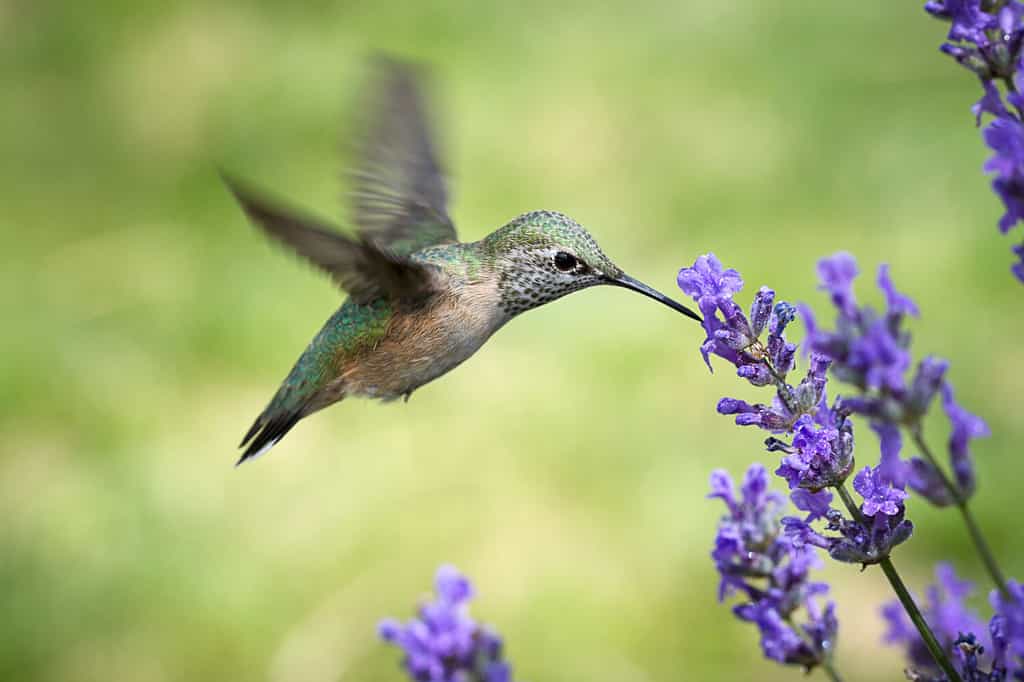
The tiny calliope hummingbird is the smallest hummingbird in the United States.
©Gregory Johnston/Shutterstock.com
There are three species of hummingbirds in the region, with rufous hummingbirds (Selasphorus rufus) and calliope hummingbirds (Selasphorus calliope) being the most common. The black-chinned hummingbird (Archilochus alexandri) is also present but is usually only seen during the spring and summer months. Calliope hummingbirds, in particular, are the smallest birds in the United States, reaching a maximum length of just four inches.
Grey Wolf

Grey wolves are present on Many Glacier.
©Nick N A/Shutterstock.com
Although they’re not common in the park, one of the most thrilling sights that you could see would be a grey wolf (Canis lupus). They are the most elusive animals in Glacier, but there have been a number of sightings of them in the park over the last couple of decades. Most sightings have been around the North Fork Valley and Many Glacier. However, it’s important to remember that wolves are powerful predators, so you should always keep your distance from them.
Long-Toed Salamander

Long-toed salamanders are named for the long toes on their hind feet.
©HWall/Shutterstock.com
The long-toed salamander (Ambystoma macrodactylum) is the only species of salamander present in Glacier National Park. Long-toed salamanders are named for the particularly long fourth toe on their hind feet. They typically live in forests and wetlands and are fairly common in Montana.
Mountain Goat
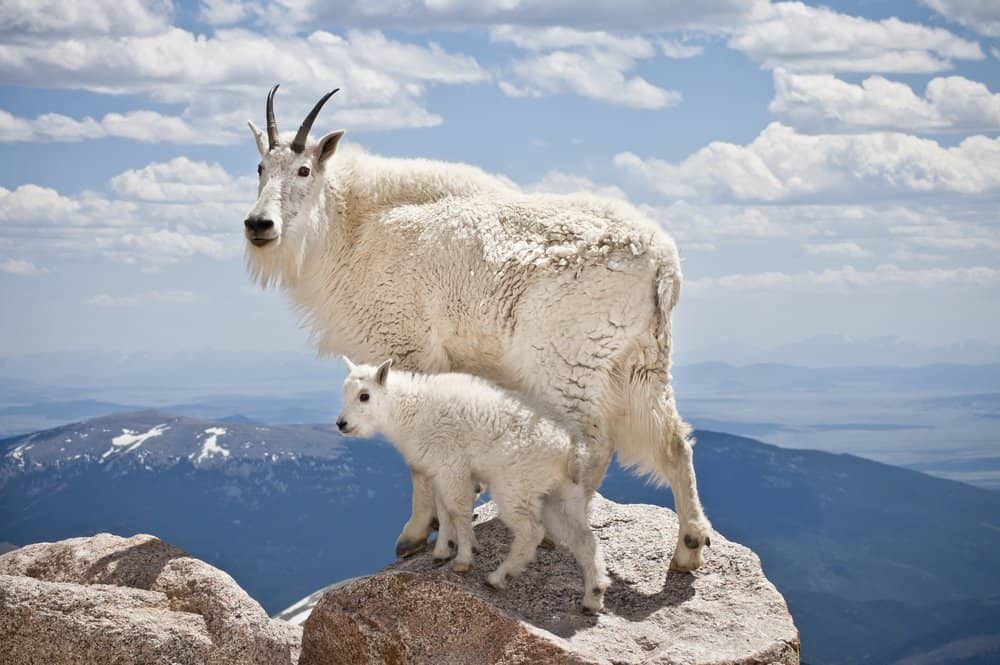
Mountain goats can be spotted climbing at high elevations.
©Joshua Schutz/Shutterstock.com
If you’re in the mountains, then you might spot some mountain goats (Oreamnos americanus) clambering across the rocks. As well as being sure-footed, they’re also well-suited to their habitat, as they have thick, double coats to protect them from the harsh winter weather. They also have long beards and a set of horns that are usually between six and 11 inches long.
Mountain Lion
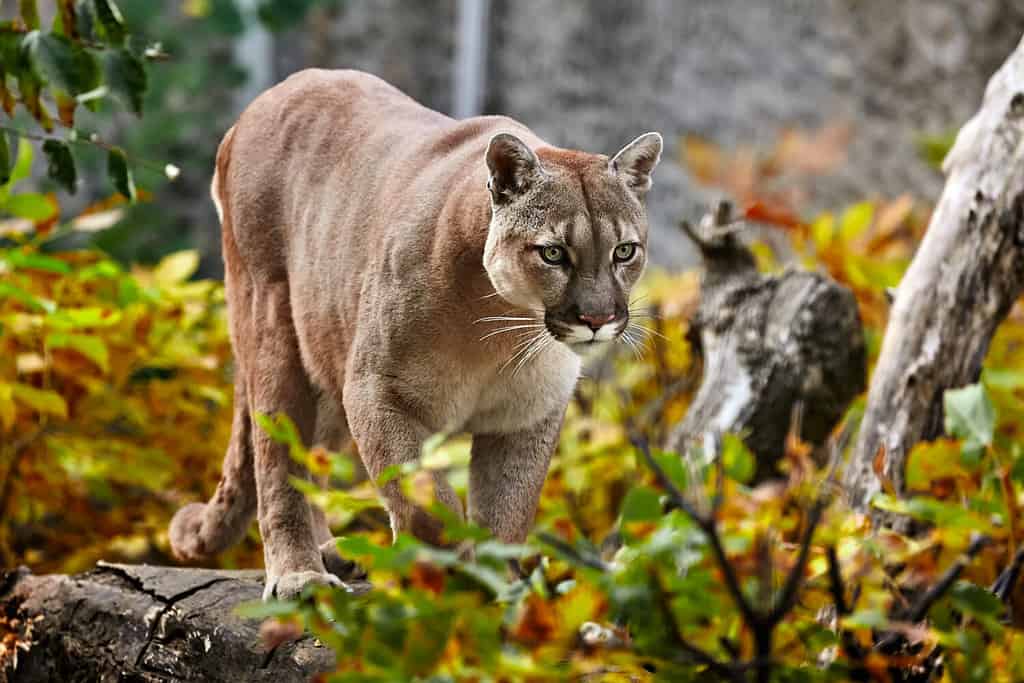
Mountain lions prefer to live in forests and woodlands.
©Evgeniyqw/Shutterstock.com
Another large predator in Glacier National Park is the elusive mountain lion (Felis concolor), which can reach more than seven feet long from nose to tail. Mountain lions are present across most areas of the park, although their preference is for forest and woodland areas. They are solitary by nature, coming together only during mating season. Mountain lions prey on all of the larger animals in the region — bighorn sheep, mountain goats, moose, elk, and deer — as well as some of the smaller mammals.
Owls

The northern pygmy owl is one of several owl species that nest in Glacier National Park.
©Jordan Feeg/Shutterstock.com
You might also spot some owls during your visit, as there are numerous species present in the park. Although some are rarer than others, you might spot species such as the northern pygmy owl, barred owl, or great horned owl—all of which have been known to nest in the park. If you’re visiting during the winter months, then you might even be lucky enough to spot rare visitors such as snowy owls or long-eared owls.
Painted Turtle
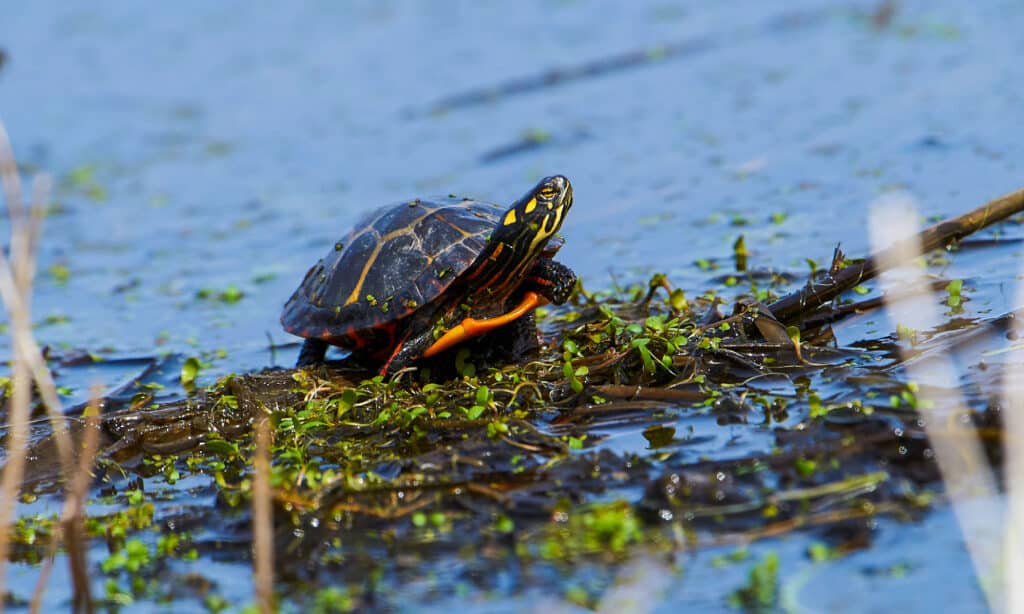
The stunning painted turtle can be observed during the summer months in the park.
©iStock.com/Wildpix645
The only species of turtle in the region is the painted turtle (Chrysemys picta). However, you won’t spot them during the winter, as they spend the coldest months of the year in hibernation. Painted turtles hibernate either on the shore, close to the water, or in the mud at the bottom of the water itself, although during their active period, they can be spotted in and around slow-moving bodies of water. Painted turtles have a distinctive appearance, with bright yellow stripes on their faces.
River Otter

Although sightings are scarce, river otters can be seen in the larger rivers in the region.
©Jana Krizova/Shutterstock.com
River otters (Lontra canadensis) are not as common in Glacier National Park and are mainly found in the larger rivers. They are powerful aquatic predators and eat a variety of fish and amphibians, as well as reptiles and small mammals. They are social animals and often engage in play fights with other otters.
Shiras Moose
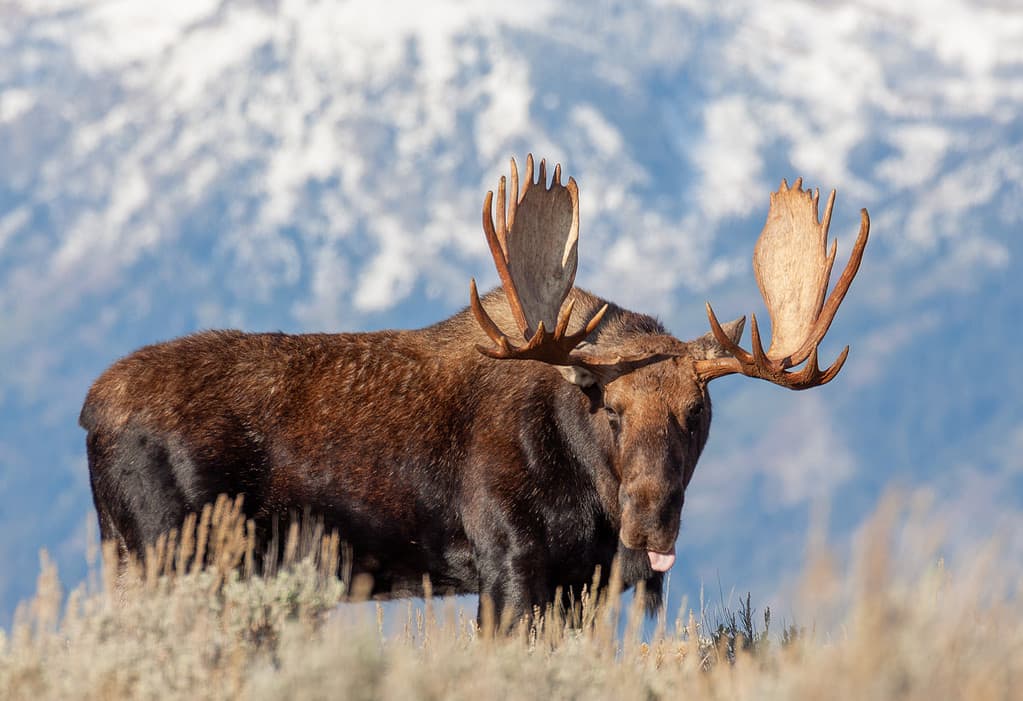
Male Shiras moose can reach around 750 pounds.
©equigini/iStock via Getty Images
You might also see moose during your visit, and the subspecies in Glacier is the Shiras moose (Alces alces shirasi). Shiras moose are not as large as some of the other subspecies living in the United States, but males can still reach approximately 750 pounds. Moose can typically be found in forests and meadows, with Many Glacier, North Fork, and Fishercap Lake being among the best places to spot them.
Snakes
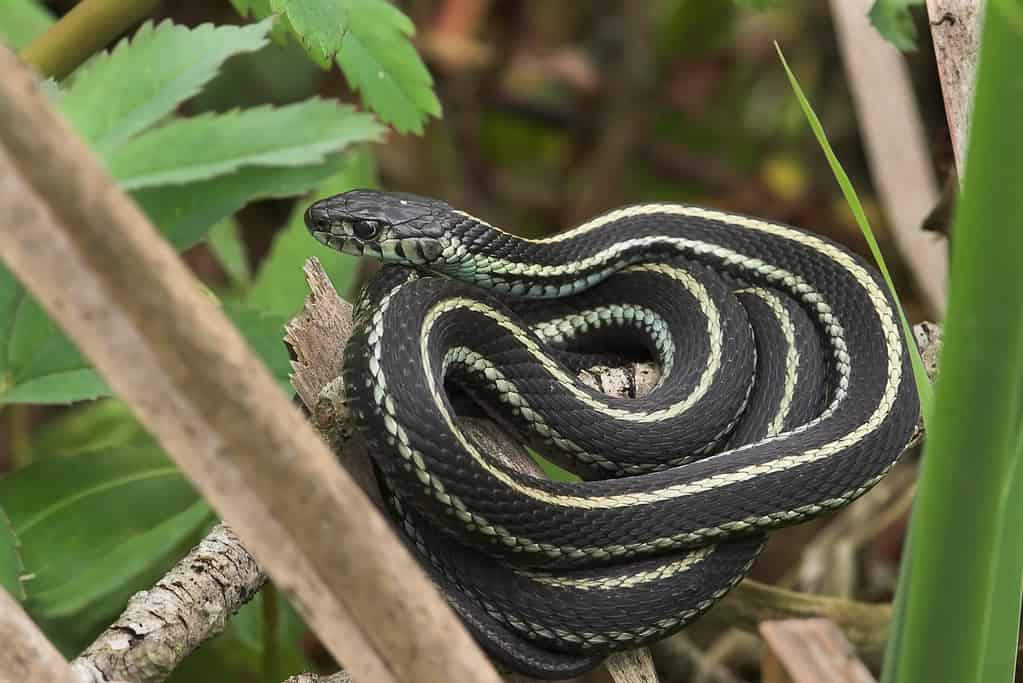
There are two species of garter snakes in the national park.
©iStock.com/rkhalil
The two common species of snakes living in Glacier National Park are both garter snakes — the common garter snake (Thamnophis sirtalis) and the western terrestrial garter snake (Thamnophis elegans). Garter snakes can live in a variety of habitats, including forests, woodlands, and grasslands. Both species have three distinctive light-colored stripes on their bodies—one on their back and one on each side—although the ground color can vary. They typically eat a variety of insects, amphibians, worms, and snails, but they also sometimes prey on fish. Although garter snakes are the most common species in the park, it’s also suspected that the rubber boa (Charina bottae) is present, but this is unconfirmed due to their nocturnal nature.
Snowshoe Hare

Showshoe hares are common in forest regions in Glacier National Park.
©Mircea Costina/Shutterstock.com
Another common animal that you might encounter is the snowshoe hare (Lepus americanus), which is mainly found in forest areas. In the summer, they are brown with a grey belly and black tips on their ears and tail. However, in the winter, they turn completely white, which helps them to blend and hide from predators in snowy conditions. Snowshoe hares do have a lot of predators, which include lynx, coyotes, and wolverines.
White-Tailed Deer

White-tailed deer can be recognized by the white patch on their tail.
©Amy Lutz/Shutterstock.com
You might also spot white-tailed deer (Odocoileus virginianus) during your visit. White-tailed deer are named for their distinctive white patch on the underside of their tail. Their size varies, but males are typically larger than females and can weigh up to 300 pounds. White-tailed deer can live in various habitats, but they are most often found in forests around the park.
Wolverine

The wolverine is found in forests and grasslands.
©Steve Jones/ via Getty Images
Wolverines (Gulo gulo) are members of the Mustelidae family, which includes badgers, otters, and weasels. They are one of the larger members, with a body length of up to 43 inches, excluding their tail. Despite their size and sharp claws, wolverines are mainly scavengers. However, they can also prey on animals such as squirrels and rabbits. Wolverines are typically found in remote forests and grasslands, so it’s not guaranteed that you’ll see one, even though there is a confirmed population living in Glacier National Park.
Woodpeckers

Pileated woodpeckers are one of several species of woodpecker in the park.
©Vlad G/Shutterstock.com
There are several species of woodpeckers in Glacier National Park, both resident and rare. Some of the most common species that can be seen all year round include the northern flicker, pileated woodpecker, downy woodpecker, hairy woodpecker, and the American three-toed woodpecker. Woodpeckers inhabit forest and woodland areas throughout the park.
The post All the Animals You’ll Discover in Glacier National Park appeared first on A-Z Animals.
November 03, 2025 at 06:02PMHannah Ward
.jpeg)
.jpeg)

0 Comments